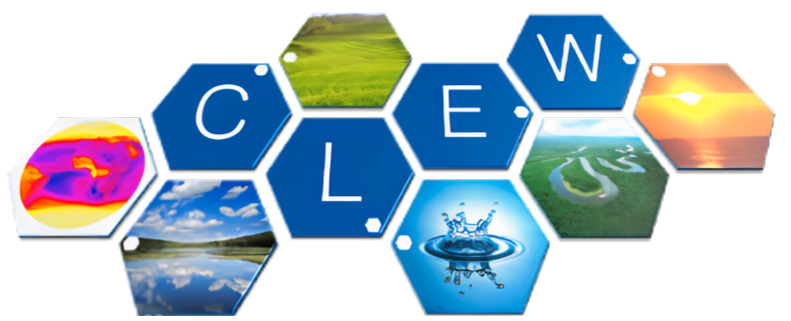Integrated Climate, Land, Energy and Water Systems
How do we plan and design systems of systems which are better than their constituent parts? How do we take advantage of synergies, navigate trade-offs and avoid path-dependent traps?

Climate, land-use, energy and water systems (CLEWs) models are tools for simultaneous consideration of food, energy and water security. They are designed to assess how production and use of these resources may contribute to climate change, and how climate change may affect the resource systems. By comparing different technologies and value chains, such models can identify pressure points, potential conflicts in resource use, and indicate synergies and trade-offs to reach several development goals simultaneously. CLEWs can analyse policy decisions on issues such as the promotion of clean energy, competition for water and agricultural modernization and can identify paths for policy coherence.
There are several ways of building a CLEWs model. Entry-level models can be created by representing several resource systems together with the same tool, using for example the open source OSeMOSYS. Data regarding the structure of the energy system, land use and agriculture and water supply are needed for such purpose. More detailed system representations can be obtained using e.g. SEI’s WEAP for water system representation, GAEZ for land systems representation and climate inputs from General Circulation Models.
Main research objectives
- To inform planning and policy coherence between the CLEWs sectors
- To assists the exploration of interactions between (and within) CLEW systems via quantitative means
- To assess the importance of uncertainties in each of the CLEWs systems
- To assess the resilience to climate change (e.g. water-energy systems)
Methods used
- CLEWs framework
- Processing of climate data
- Integrated modelling
- Open-source tools (Osemosys, GIS)
- IAM templates
- BeWhere
- Hydrological modelling
Key publications
- Ramos, E. P., Howells, M., Sridharan, V., Engström, R. E., Taliotis, C., Mentis, D., Gardumi, F., Strasser, L. de, Pappis, I., Balderrama, G. P., Almulla, Y., Beltramo, A., Gomez, C. R., Sundin, C., Alfstad, T., Lipponen, A., Zepeda, E., Niet, T., Quirós-Tortós, J., … Rogner, H. (2020). The Climate, Land, Energy, and Water systems (CLEWs) framework: a retrospective of activities and advances to 2019. Environmental Research Letters. doi.org/10.1088/1748-9326/abd34f
- Howells, M., Hermann, S., Welsch, M., Bazilian, M., Segerström, R., Alfstad, T., Gielen, D., Rogner, H., Fischer, G., van Velthuizen, H., Wiberg, D., Young, C., Roehrl, R. A., Mueller, A., Steduto, P., & Ramma, I. (2013). Integrated analysis of climate change, land-use, energy and water strategies. Nature Climate Change, 3(7), 621–626. doi.org/10.1038/nclimate1789
- Welsch, M., Hermann, S., Howells, M., Rogner, H. H., Young, C., Ramma, I., Bazilian, M., Fischer, G., Alfstad, T., Gielen, D., Le Blanc, D., Röhrl, A., Steduto, P., & Müller, A. (2014). Adding value with CLEWS – Modelling the energy system and its interdependencies for Mauritius. Applied Energy, 113, 1434–1445. doi.org/10.1016/j.apenergy.2013.08.083
- Beltramo, A., Ramos, E.P., Taliotis, C., Howells, M. and Usher, W., 2021. The global least-cost user-friendly clews open-source exploratory model. Environmental Modelling & Software, 143, p.105091. doi.org/10.1016/j.envsoft.2021.105091
- Sridharan, V., Shivakumar, A., Niet, T., Ramos, E.P. and Howells, M., 2020. Land, energy and water resource management and its impact on GHG emissions, electricity supply and food production-Insights from a Ugandan case study. Environmental Research Communications, 2(8), p.085003. iopscience.iop.org/article/10.1088/2515-7620/abaf38/meta
